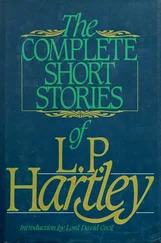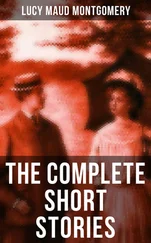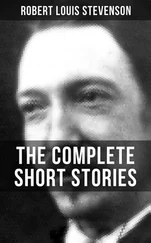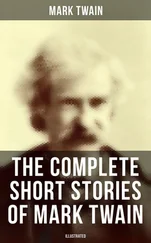‘My dear Charles, I assure you, categorically, the confounded picture has actually gone –’ Georg shot out three inches of elegant chalk-blue cuff and snapped his hands together ‘– puff! For once everyone is speaking the truth. What is even more remarkable, the painting was genuine.’
‘I don’t know whether I’m glad to hear that or not,’ I admitted. ‘But it’s certainly more than you can say for most of the Louvre – and the National Gallery.’
‘Agreed.’ Georg straddled his desk, his patent leather shoes twinkling in the light. ‘I had hoped that this catastrophe might induce the authorities to make a clean breast of some of their so-called treasures, in an attempt, as it were to dispel some of the magic surrounding the Leonardo. But they are in a complete fuddle.’
For a moment we both contemplated what such a sequence of admissions would do to the art markets of the world – the prices of anything even remotely genuine would soar – as well as to the popular image of Renaissance painting as something sacrosanct and unparalleled. However, this was not to gainsay the genius of the stolen Leonardo.
‘Tell me, Georg,’ I asked. ‘Who stole it?’ I assumed he knew.
For the first time in many years Georg seemed at a loss for an answer. He shrugged helplessly. ‘My dear Charles, I just do not know. It’s a complete mystery. Everyone is as baffled as you are.’
‘In that case it must be an inside job.’
‘Definitely not. The present crowd at the Louvre are beyond reproach.’ He tapped the telephone. ‘This morning I was speaking to some of our more dubious contacts – Antweiler in Messina and Kolenskya in Beirut – and they are both mystified. In fact they’re convinced that either the whole thing is a put-up affair by the present regime, or else the Kremlin itself is involved.’
‘The Kremlin?’ I echoed incredulously. At the invocation of this name the atmosphere heightened, and for the next half an hour we spoke in whispers.
The conference that afternoon, at the Palais de Chaillot, offered no further clues. Chief Detective-Inspector Carnot, a massive gloomy man in a faded blue suit, took the chair, flanked by other agents of the Deuxieme Bureau. All of them looked tired and dispirited; by now they were having to check up on some dozen false alarms each hour. Behind them, like a hostile jury, sat a sober-faced group of investigators from Lloyds of London and Morgan Guaranty Trust of New York. By contrast, the two hundred dealers and agents sitting on the gilt chairs below the platform presented an animated scene, chattering away in a dozen languages and flying a score of speculative kites.
After a brief resumé, delivered in a voice of sepulchral resignation, Inspector Carnot introduced a burly Dutchman next to him, Superintendent Jurgens of the Interpol bureau at The Hague, and then called on M. Auguste Pecard, assistant director of the Louvre, for a detailed description of the theft. This merely confirmed that the security arrangements at the Louvre were first-class and that it was absolutely impossible for the painting to have been stolen. I could see that Pecard was still not entirely convinced that it had gone.
‘… the pressure panels in the floor surrounding the painting have not been disturbed, nor have the two infra-red beams across its face been broken. Gentlemen, I assure you it is impossible to remove the painting without first dismantling the bronze frame. This alone weighs eight hundred pounds and is bolted into the wall behind it. But the electric alarm circuit which flows through the bolts was not interrupted …’
I was looking up at the two life-size photographs of the front and reverse faces of the painting fastened to the screens behind the dais. The latter showed the back of the oak panel with its six aluminium ribs, contact points for the circuit and a mass of chalked graffiti enscribed over the years by the museum laboratories. The photographs had been taken the last time the picture was removed for cleaning, and after a brief bout of questioning it transpired that this had been completed only two days before the theft.
At this news the atmosphere of the conference changed. The hundred private conversations ceased, coloured silk handkerchiefs were returned to their breast pockets.
I nudged Georg de Stael. ‘So that explains it.’ Obviously the painting had disappeared during its period in the laboratory, where the security arrangements would be less than fool-proof. ‘It was not stolen from the gallery at all.’
The hubbub around us had re-started. Two hundred noses once again were lifted to scent the trail. So the painting had been stolen, and was somewhere at large in the world. The rewards to the discoverer, if not the Legion of Honour or a Knighthood, then at least complete freedom from all income tax and foreign exchange investigations, hovered like a spectre before us.
On the way back, however, Georg stared sombrely through the window of the taxi.
‘The painting was stolen from the gallery,’ he said to me pensively. ‘I saw it there myself just twelve hours before it vanished.’ He took my arm and held it tightly. ‘We’ll find it, Charles, for the glory of Northeby’s and the Galleries Normande. But, my God, the man who stole it was a thief out of this world!’
So began the quest for the missing Leonardo. I returned to London the next morning, but Georg and I were in regular contact by telephone. Initially, like all the others on its trail, we merely listened, ears to the ground for an unfamiliar foot-fall. In the crowded auction rooms and galleries we waited for the indiscreet word, for the give-away clue. Business, of course, was buoyant; every museum and private owner with a third-rate Rubens or Raphael had now moved up a rung. With luck the renewed market activity would uncover some distant accomplice of the thief, or a previous substitute for the Leonardo – perhaps a pastiche Mona Lisa by one of Verrocchio’s pupils – would be jettisoned by the thief and appear on one of the shadier markets. If the hunt for the vanished painting was conducted as loudly as ever in the outside world, within the trade all was quiet and watchful.
In fact, too quiet. By rights something should have materialized, some faint clue should have appeared on the fine filters of the galleries and auction rooms. But nothing was heard. As the wave of activity launched by the displaced Leonardo rolled past and business resumed its former tempo, inevitably the painting became just another on the list of lost masterpieces.
Only Georg de Stael seemed able to maintain his interest in the search. Now and then he would put through a call to London, requesting some obscure piece of information about an anonymous buyer of a Titian or Rembrandt in the late 18th century, or the history of some damaged copy by a pupil of Rubens or Raphael. He seemed particularly interested in works known to have been damaged and subsequently restored, information with which many private owners are naturally jealous of parting.
Consequently, when he called to see me in London some four months after the disappearance of the Leonardo, it was not in a purely jocular sense that I asked: ‘Well, Georg, do you know who stole it yet?’
Unclipping a large briefcase, Georg smiled at me darkly. ‘Would it surprise you if I said “yes”? As a matter of fact, I don’t know, but I have an idea, a hypothesis, shall we say. I thought you might be interested to hear it.’
‘Of course, Georg,’ I said, adding reprovingly: ‘So this is what you’ve been up to.’
He raised a thin forefinger to silence me. Below the veneer of easy charm I noticed a new mood of seriousness, a cutting of conversational corners. ‘First, Charles, before you laugh me out of your office, let’s say that I consider my theory completely fantastic and implausible, and yet –’ he shrugged deprecatingly ‘– it seems to be the only one possible. To prove it I need your help.’ ‘Given before asked. But what is this theory? I can’t wait to hear.’
Читать дальше












